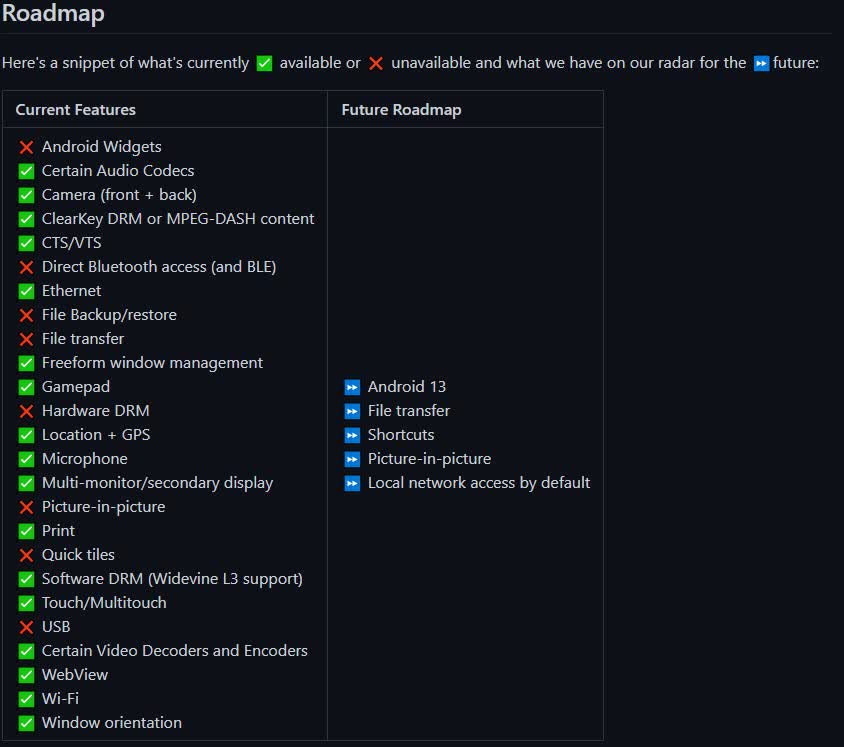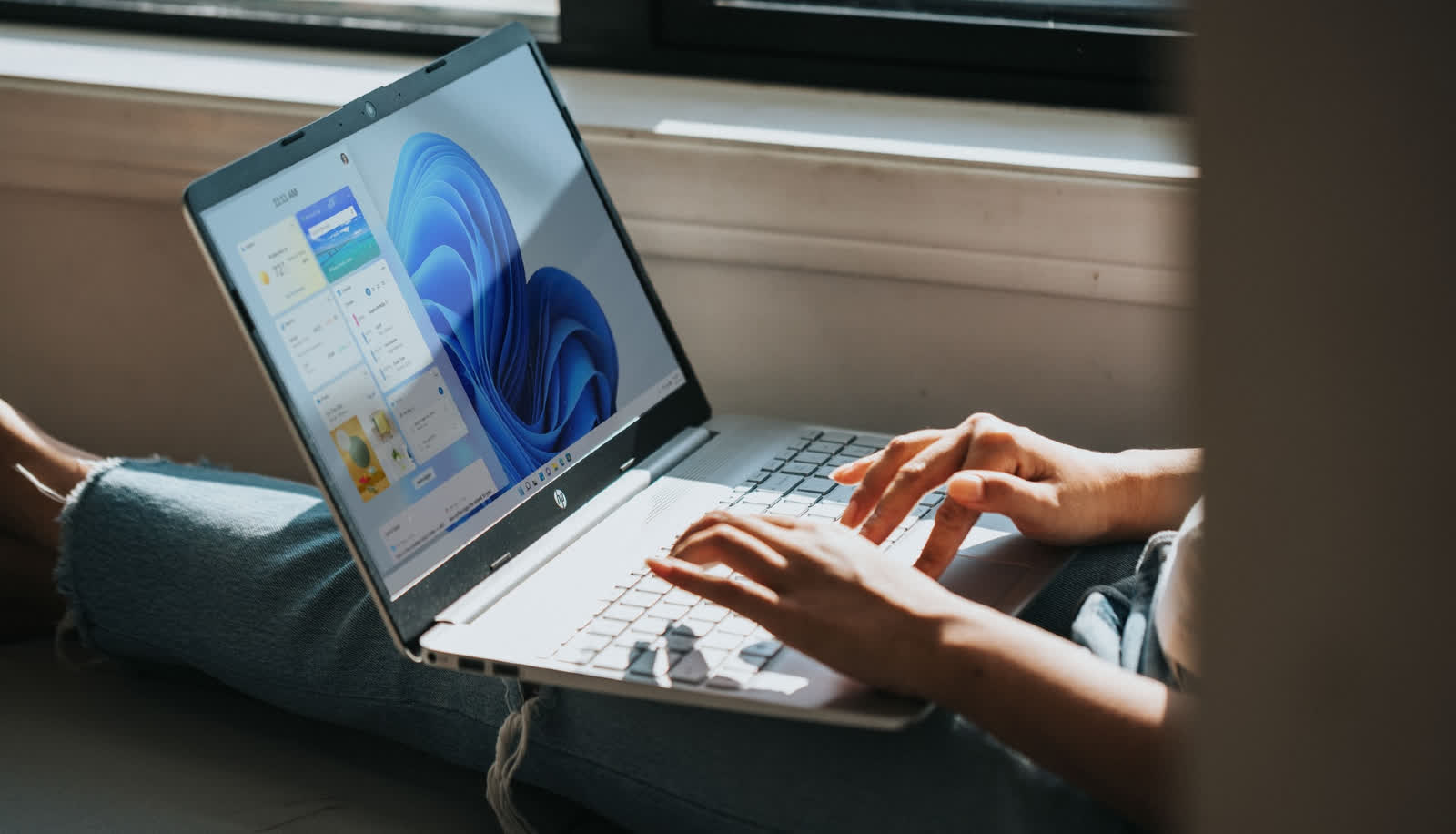In brief: Even before it launched, Microsoft was promising to bring Android connectivity to Windows 11 to offer users a similar functionality that iPhone customers have long enjoyed with Macs. A new look at a developer roadmap sheds more light on the Android elements heading to the Windows experience.
A GitHub page for Windows-Android subsystem developers has revealed Microsoft's roadmap for improving Android compatibility on Windows 11. The company's plans include incorporating the recently-released Android 13.
The roadmap displays a column for Android app features Microsoft has either implemented or soon will and another for plans further off in the future. The latter mentions adding Android 13 support and lists tools such as file transfer, shortcuts, picture-in-picture, and default local network access.
In the "current features" column, Microsoft is still working on Android widgets, direct Bluetooth access, BLE, file backup and restore, hardware DRM, picture-in-picture, quick tiles, and USB. Just a few of the many already-available functions include front and back camera support, ethernet, GPS, secondary display support, gamepad compatibility, WebView, and freeform window management.

The Android app compatibility that Microsoft promised with Windows 11 reached public availability with the first update in February. Microsoft released the feature in a "preview" state, letting users access around 1,000 Android apps from the Amazon AppStore. Users can also sideload APK files. Developers will continue implementing more features over time.
Google released Android 13 for its Pixel phones in August, with it coming to other devices later this year. Most of the major OS update's new features deal with security, privacy, and customization. Android users gained more granular controls over which files apps can access and more cross-compatibility with tablets and Chromebooks. It's unclear how much of this new functionality could make its way into Android apps for Windows 11.
The new and upcoming Android features in Windows 11 follow the 22H2 update Microsoft began rolling out in September. The patch includes a new video editing app, Start Menu changes, HDR calibration, Smart App Control security, and more. It also refreshes File Explorer, giving it a new homepage. Developers are also adding browser-like tabs at the end of October.
Users adoption has been somewhat lukewarm on Windows 11. Recent metrics indicate that Windows 11 is gaining traction much more slowly than Windows 10, primarily due to the new OS's onerous CPU requirements. A significant number of systems may not support it at all.
